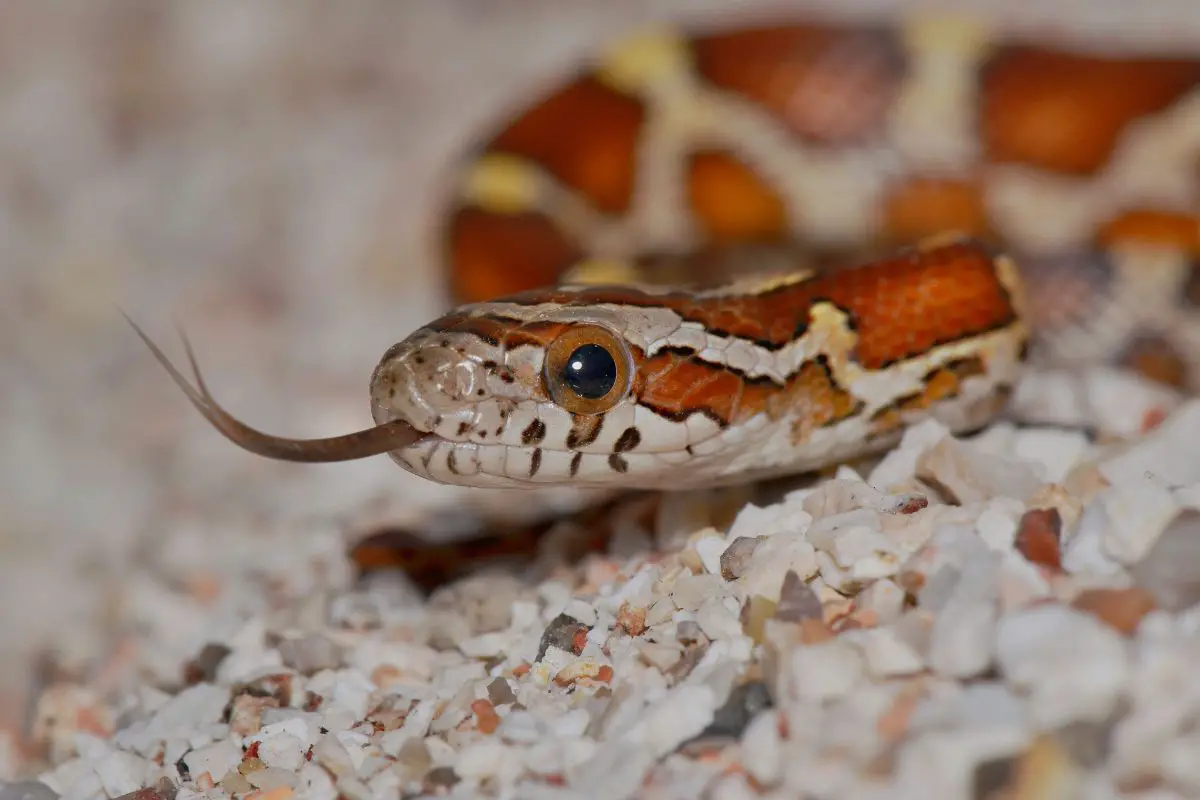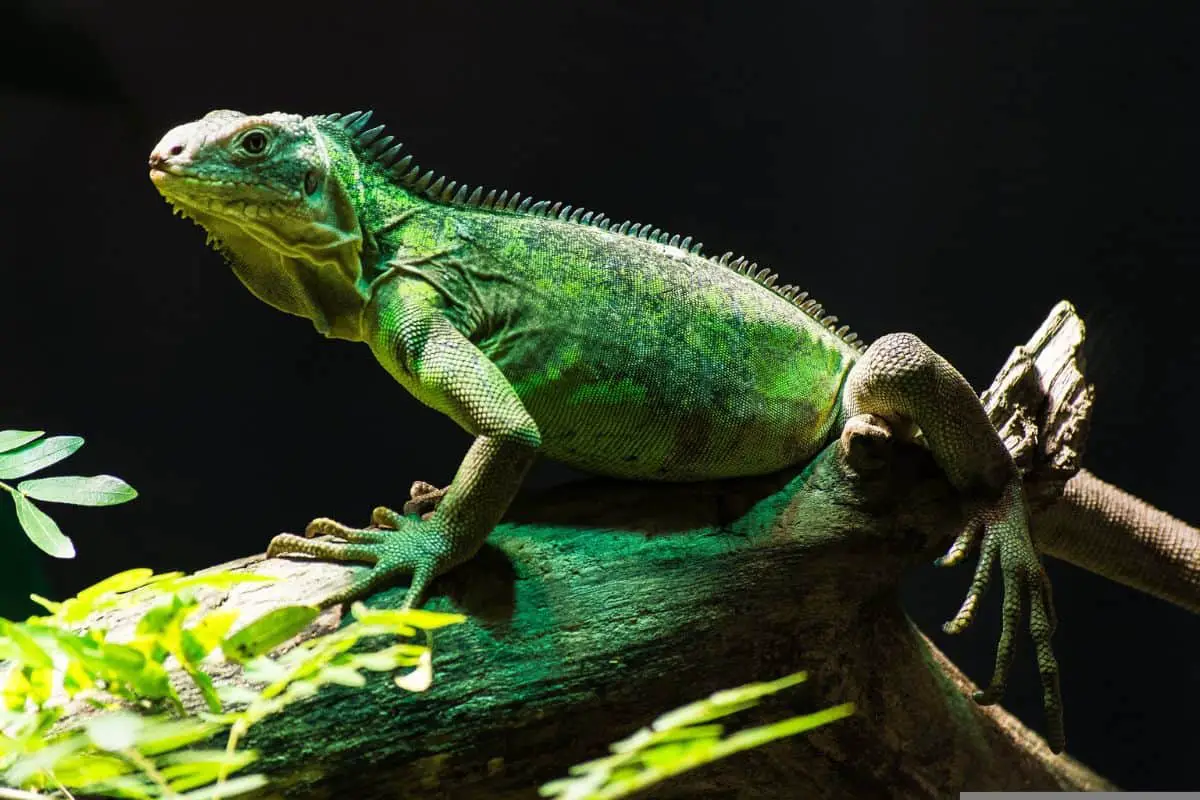Frogs on your porch can be a nuisance for many reasons. Not only can they get loud at night during mating season but they also leave behind unpleasant droppings you need to clean up. Needless to say, it doesn’t make your porch a relaxing place to hang out.
Luckily, there are solutions to your problem without having to kill them. Let’s look at some useful (and humane) tips on how to keep frogs away from your porch.
How to Keep Frogs Off Your Porch
If you don’t want to harm the species you have an issue with, don’t worry. Here are 10 non-chemical tips on how to keep frogs from your porch.
1. Set up traps
There are traps that are humane options that won’t hurt the frog. For example, leghold traps with rubber paddings will prevent the frog from escaping but not harm them.
There are also catch and release cages that are large enough for frogs. This includes a cane catcher specially designed for catching cane toads. You could try to use a net if you find frogs in trees nearby your porch.
2. Know the type of frog

You’ll want to figure out what type of frog you are dealing with to understand better how to handle the situation. For example, suppose you see Eastern gray treefrogs on your property.
In that case, you might not have to worry about them getting on your porch because they prefer living in trees. On the other hand, American green treefrogs will make homes in shrubs and wander onto your porch to catch the insects they eat.
Some states also protect both these species. Therefore, you’ll need to talk to animal control or a wildlife rehabber because you might not be able just to put them back in the woods when you catch them. You can also submit a photo of the frog to the local Fish and Wildlife authorities to help with identification.
3. Turn off your porch lights
We know having a dark porch at night can be scary, but your garden and porch lights are a big frog magnet. The lights attract insects and the frogs follow the insects to feed on them. Consider purchasing motion sensor outdoor lights that only turn on if you’re out on your porch briefly at night.
4. Clean and seal your porch
Keeping your porch dry and clean will reduce the number of safe and attractive places for frogs to go and hide. You’ll want to sweep your porch often and remove any shrubs or plants they like to hang out in that are on or around the porch. Wiping down your outdoor surfaces and furniture when they get wet, such as after rains, can also make the porch less attractive.
Additionally, sealing off any ground-level openings around your porch that go into the house will reduce hiding places. This can weep holes or cracks.
5. Make your yard less attractive
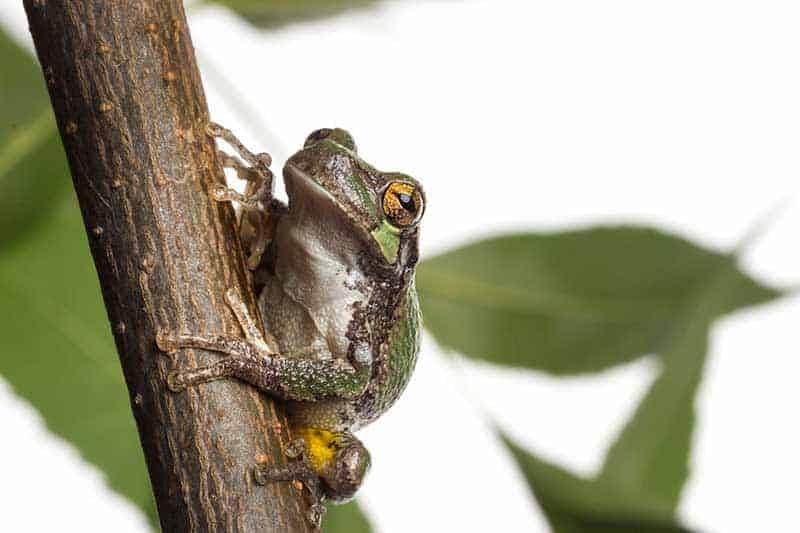
One way to prevent frogs on your porch is to prevent them from finding your property home-worthy in the first place. You’ll want to remove weeds from your yard, remove bushy or tall plants, and replace large chunks of deep piles of mulch.
Frogs also love moisture and are attracted to various sources of water you might have around. This includes bowls of water, ponds, swampy areas, and birdbaths. Removing standing water will also prevent mosquitoes and other insects, which are a food source for the frogs.
6. Create an alternate frog home
Suppose you aren’t trying to remove frogs from your yard completely but just want to keep them away from your porch. In that case, you can create a frog home in an area far away from the porch. Make sure the location has tall grass and ideally is by a water source.
If you trap them on your porch, you can then relocate them to the area of your property you prefer they stay. You can also surround your pond with a mesh netting that’s tall enough for the frogs not to jump over so they wander towards your porch.
7. Use natural repellants
Some natural repellants, such as citric acid or concentrated caffeine, can end up killing frogs. If you don’t want to kill them but just make them uncomfortable enough not to return to your porch area, there are some other options. For example, coffee grounds have low enough levels of caffeine that spreading them on your porch would just cause discomfort.
Lemon juice spray is another natural repellant since the citrus causes discomfort and frogs don’t like the smell of natural lemons. You can also spread salt along your porch edges. This will burn the frog’s toes and deter them from the area. Make sure not to apply the salt near your plants since it can kill plants.
8. Introduce frog predators
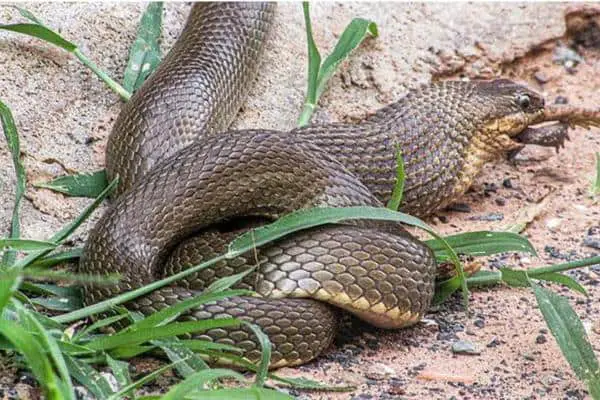
Although not the most humane method on this list, it’s still a natural course of nature. You can introduce or attract frog predators onto your property to hunt the frogs and reduce their numbers. Do your research on the type of frog you have and what predator isn’t sensitive to their poisons.
For example, you can put up a bat house to handle tree frog problems. Certain lizards also eat small frogs and can be introduced to your yard or kept as pets. Other potential predators are cats, snakes, hawks, or other birds.
9. Wear protective gear
While it’s generally not recommended to try and grab frogs, sometimes you get into a situation where you need to. Whether you try to grab them as you see them on your porch or are trying the methods listed above and come in contact, stay protected.
Frogs have bacteria living on their skin that could lead to illness in people. You’ll want to be prepared by wearing gloves and long-sleeved shirts and pants.
Protective gear is especially important if you’re dealing with toads. Toads, such as the cane toad, can secrete harmful poisons that are also dangerous to pets.
10. Don’t be afraid to ask for help
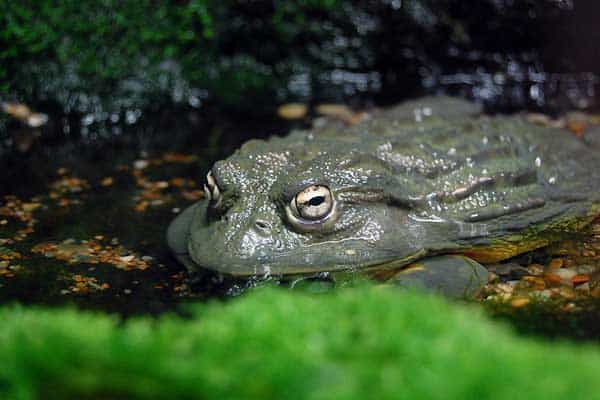
Besides frogs that are protected species, you might still want to call animal control for help. For example, the bullfrog can grow up to 12 inches, generally leap around 3 feet, and can be aggressive if defending its territory. This can make them tricky to remove from your property alone without help, so don’t be afraid to get assistance from professionals.


